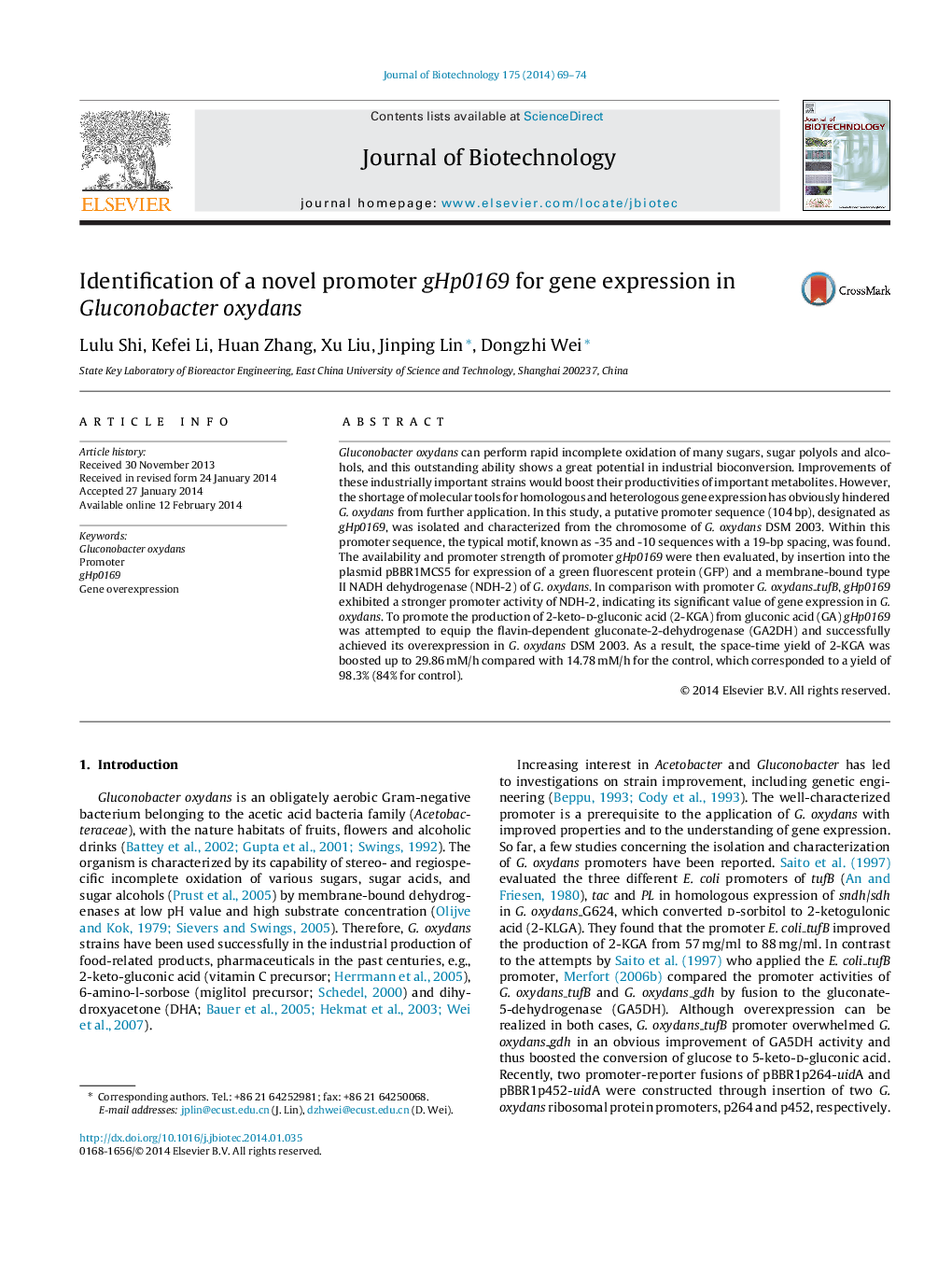| Article ID | Journal | Published Year | Pages | File Type |
|---|---|---|---|---|
| 6491584 | Journal of Biotechnology | 2014 | 6 Pages |
Abstract
Gluconobacter oxydans can perform rapid incomplete oxidation of many sugars, sugar polyols and alcohols, and this outstanding ability shows a great potential in industrial bioconversion. Improvements of these industrially important strains would boost their productivities of important metabolites. However, the shortage of molecular tools for homologous and heterologous gene expression has obviously hindered G. oxydans from further application. In this study, a putative promoter sequence (104Â bp), designated as gHp0169, was isolated and characterized from the chromosome of G. oxydans DSM 2003. Within this promoter sequence, the typical motif, known as -35 and -10 sequences with a 19-bp spacing, was found. The availability and promoter strength of promoter gHp0169 were then evaluated, by insertion into the plasmid pBBR1MCS5 for expression of a green fluorescent protein (GFP) and a membrane-bound type II NADH dehydrogenase (NDH-2) of G. oxydans. In comparison with promoter G. oxydans_tufB, gHp0169 exhibited a stronger promoter activity of NDH-2, indicating its significant value of gene expression in G. oxydans. To promote the production of 2-keto-d-gluconic acid (2-KGA) from gluconic acid (GA) gHp0169 was attempted to equip the flavin-dependent gluconate-2-dehydrogenase (GA2DH) and successfully achieved its overexpression in G. oxydans DSM 2003. As a result, the space-time yield of 2-KGA was boosted up to 29.86Â mM/h compared with 14.78Â mM/h for the control, which corresponded to a yield of 98.3% (84% for control).
Related Topics
Physical Sciences and Engineering
Chemical Engineering
Bioengineering
Authors
Lulu Shi, Kefei Li, Huan Zhang, Xu Liu, Jinping Lin, Dongzhi Wei,
